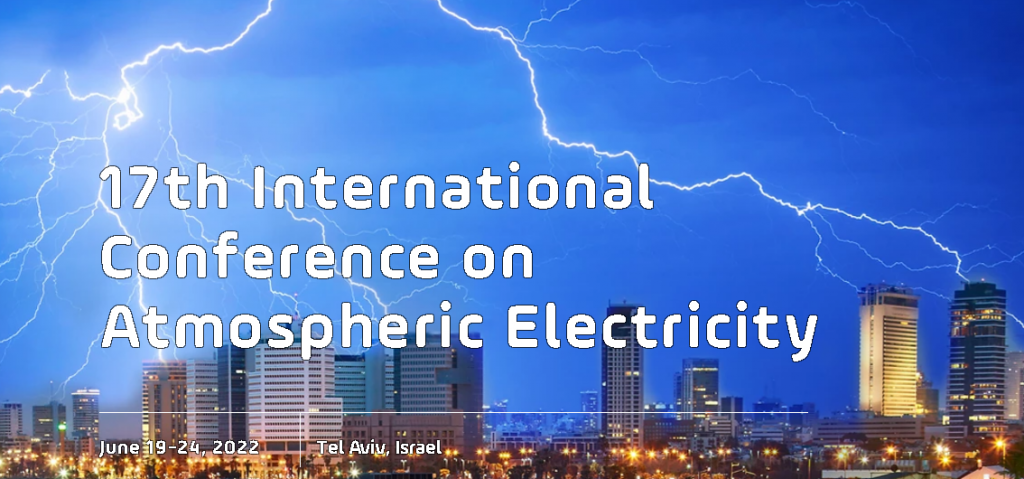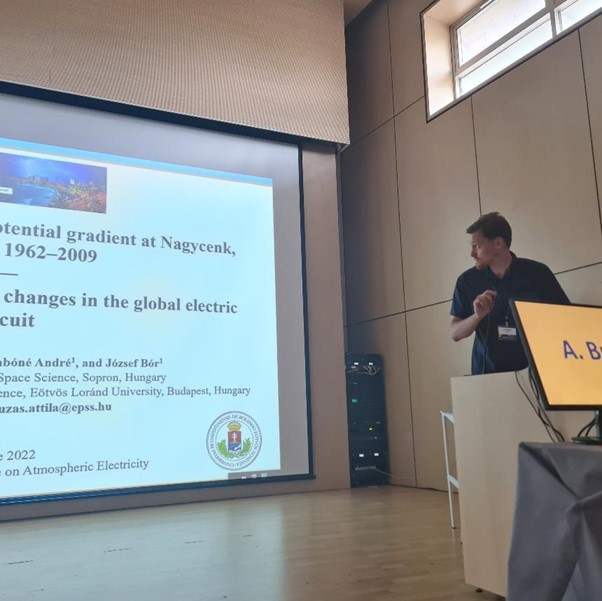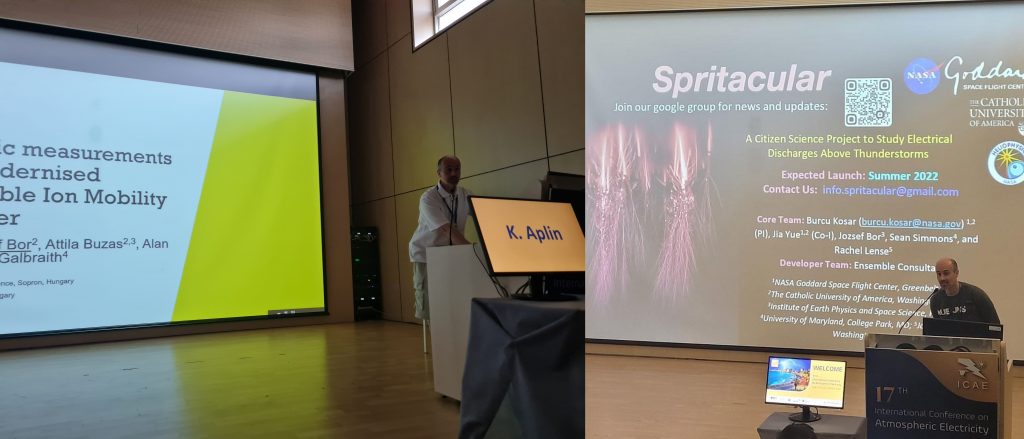Latest research achievements were presented on the ICAE conference

The latest International Conference on Atmospheric Electricity (ICAE) of the International Commission on Atmospheric Electricity was held in Tel Aviv, Izrael (June 19-24, 2022; https://www.icae2022.com). The commission is one of the commissions in the International Association of Meteorology and Atmospheric Sciences (IAMAS) which is one of the associations of the International Union of Geophysics and Geodesy (IUGG). Research in Hungary related to ICAE was represented by researchers of the Institute of Earth Physics and Space Science.

Attila Buzás, a young researcher and a PhD student of the institute presented his results regarding the long-term variation of the atmospheric electric potential gradient (PG) measurements at the Széchenyi István Geophysical Observatory, near Nagycenk (NCK). At NCK, the PG has been recorded since 1962, it is one of the longest PG datasets in the world. By studying the long-term variations of the PG, important information can be inferred about the global changes in Earth’s electric environment.

Tamás Bozóki presented a detailed analysis of global lightning activity for a 19-day period in January 2019. The research was based on Schumann Resonance (SR) measurements and independent global lightning monitoring techniques, and is supported by the NKFIH OTKA project “Elaboration of new methods for studying the near-Earth environment by extremely low frequency radiation of lightning strokes” (K138824). He also presented two posters on the machine learning-based classification of ELF transients and on the study of global lightning activity in the context of the El Niño-Southern Oscillation (ENSO) global climate phenomenon.

Dr. József Bór reported on preliminary results of obtaining the global distribution of vertical charge moment change of intense lightning strokes from data recorded in the Széchenyi István Geophysical Observatory near Nagycenk, Hungary. This research work is supported by the NKFIH OTKA project “Elaboration of new methods for studying the near-Earth environment by extremely low frequency radiation of lightning strokes” (K138824). Efforts for establishing new measurements in the observatory to have information on atmospheric electrical conductivity were also presented. The measuring instrument was obtained in the framework of the infrastructure development program financed by the ELKH (https://elkh.org/en/).



